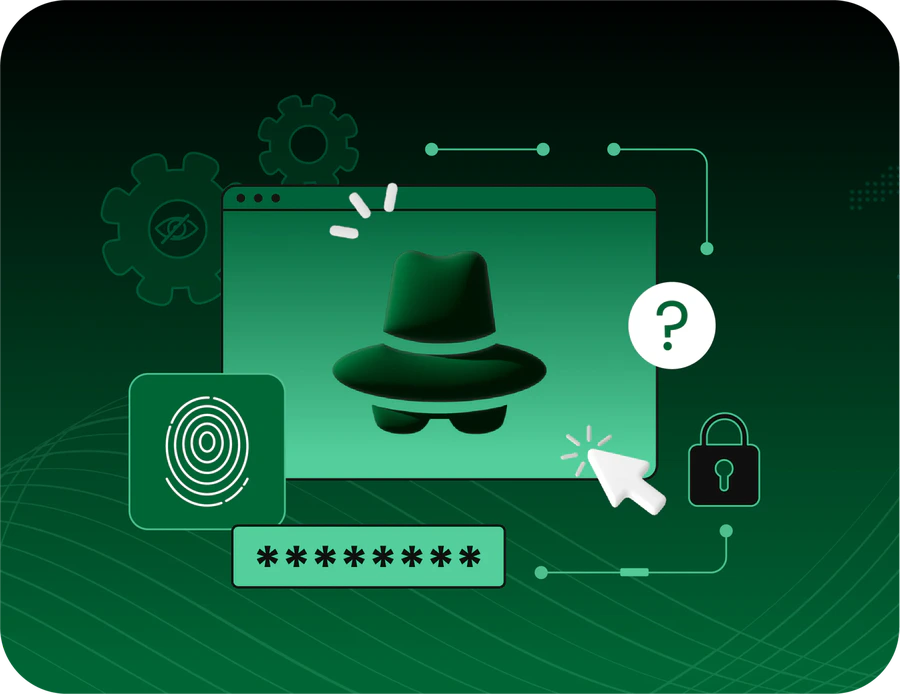Proxy Best Practices: How to Stay Undetected and Keep Accounts Safe
Want to avoid bans, CAPTCHAs, and costly account losses? Learn the right way to set up proxies so you can manage multiple accounts, run ads, scrape data, and scale safely without getting detected.
What’s Inside The Guide:
When to use residential, ISP, mobile, or datacenter proxies (and what to avoid).
How IP quality vs. quantity affects bans, speed, and costs.
Rotation strategies: sticky vs. rotating sessions, and how to stay undetected.
Best practices for multi-account setups across e-commerce, ads, social, and research.
Step-by-step proxy setup for scraping, automation, and account management.
Quick checks to spot bad proxies before they get your accounts flagged.
A Little Preview of the Guide
Proxies act as the middle layer between you and the websites you visit. Instead of exposing your real IP, a proxy masks it with another address—making you look like a different user in a different place. This is key for staying safe when managing accounts, scraping data, or running ads.
But not all proxies are equal. Some types are trusted more than others, and using the wrong one can get you flagged fast.
Proxies solve common problems like:
- Bypassing geo-restrictions to access region-specific content.
- Keeping accounts isolated so multiple logins don’t trigger bans.
- Rotating IPs to prevent platforms from detecting automation or scraping.
- Maintaining stable sessions for ad dashboards, storefronts, and checkout flows.
Types of proxies covered in the guide:
- Residential proxies – IPs from real households, harder to detect.
- ISP proxies – Static, stable IPs provided by ISPs but hosted on servers.
- Datacenter proxies – Fast and cheap, but easier to block.
- Mobile proxies – IPs from 3G/4G/5G networks with high trust scores.
Staying undetected at scale
Running one account is easy. Running fifty without bans takes the right proxy setup. Learn the exact methods pros use to keep accounts alive.
How it works:
- Website sends JavaScript to draw text or shapes on a hidden canvas
- Your system renders it slightly differently based on hardware and software
- The rendered image gets converted to a hash value
- This hash becomes your unique identifier
Limitations
Residential proxies often rotate, which can cut your session short if you’re not careful. That’s not ideal for things like ad dashboards or long logins. Also, most providers charge by the gigabyte—so if you’re scraping a lot or using them nonstop, the costs can climb fast.
Designed For Users Who…
Check Out More Guides

Smarter workflows with antidetect browsers
Antidetect browsers are key for managing multiple accounts, ads, scraping, and automation—but not every setup keeps you hidden. This guide shows you:
- How they create unique, isolated profiles
- How to pair proxies with profiles for true account isolation
- Best practices for e-commerce, social media, crypto, and research
Any Check You Need
Run all essential browser fingerprint checks from one place to stay undetected
Fingerprint Check
Run a full browser fingerprint check to see how uniquely your browser can be identified across the web.
IP Check
Test your IP with our reliable IP tester and run an IP address leak test to detect unwanted exposure.
VPN Check
Test your VPN connection with our reliable VPN checker to ensure it’s working as expected and your traffic is secure.
Proxy Check
Use our proxy checker to detect leaks and confirm your proxy or VPN is working as expected.
Bot Check
Check if your browser behavior triggers bot detection systems. Stay under the radar by testing how websites classify your activity.
IP Blacklist Test
Run a fast IP blacklist check to see if your IP address is flagged in spam, threat, or security databases.
One More Step
We need your e-mail address to send you the Guide